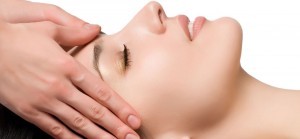Written By: Jessica Mai
Touch in and of itself is a very powerful mechanism used in so many facets of our daily lives. Moreover, touch is an essential tool which we, as massage therapists, use to facilitate relaxation and rehabilitation, in hopes to lessen anxiety and enhance overall wellness.
There are many different approaches, or types of touch used in a therapeutic massage session, all of which are used specifically to treat the muscles and complimentary structures of the body. Although each have a distinct purpose with unique benefits, a therapist’s intent in performance is fundamental. The long, slow drag of effleurage and deep, kneading grasps of petrissage, used to warm the muscles of the body and flush out toxins are common strokes and understood by most.
The rhythmical drumming of tapotement, and gentle shakes of vibration, are both primarily used for stimulating our circulatory system and desensitizing irritated nerves. Tapotement can also be quite helpful in loosening congestion in our chest walls when suffering from those nasty upper respiratory infections-vibration techniques help us therapists encourage clients to relax and let go of a stubborn, contracted extremity.
Lastly, there is the ever dreaded friction massage. The deep, and at times, uncomfortable rub which helps break up muscle adhesions and stimulates the healing process. Not a favorite for many but the lasting effects and benefits of those grueling, lip-biting minutes are totally worth the grind.
Compression, which is considered a derivative of all five aforementioned massage strokes, is a broad term used to describe the variance in ways of applying firm, static pressure to the muscles of the body. It is a method commonly used to warm and soften muscles in preparation for deeper work. However, compression can also be very light and specific, as used in lymphatic drainage techniques. Again, a therapist’s intent and technique can produce different physiological and physical results.
For example, when applying pressure in a slow, rhythmical manner, this aids in helping muscles release lactic acid (Sager and Brown, 81). During a lymphatic drainage massage, light compression and pumping encourages the lymphatic system to rid the body of metabolic wastes and excess fluid. When compression is applied in a brisk manner, this brings fresh blood to the muscles and is usually performed during a sports massage; vitalizing muscles and preparing them for activity.
Listed below, are many of the physical and physiological benefits compression offers:
- Hypertonic muscles soften and lengthen.
- Muscles are flushed with interstitial stasis reduced.
- Released histamines dilate capillaries with increased cellular nutrition.
- Muscles fire faster with increased amounts of acetylcholine.
- Muscle lesions heal faster with increased collagen production.
- Stretching muscle fibers increases capillerization.
- Fascia is rejuvenated and enlivened.
- Range of motion and freedom of movement increase.
- Myofascial pain and secondary autonomic phenomena caused by trigger points is usually eliminated.
- Physical relaxation
- Improved circulation, which nourishes cells and improves waste elimination
- Relief for tight muscles (knots) and other aches and pains
- Release of nerve compression (carpel tunnel, sciatica)
- Enhanced energy and vitality
- Some clinical styles may help heal scar tissue as well as tendon, ligament, and muscle tears
The many uses of compression and variance of technique in application are not only essential in prepping muscles for the deep tissue massage so many of you are accustomed to. This technique has a multitude of benefits, providing everything from relaxation to rehabilitation. It may feel as if nothing transformative is actually occurring, but whether the compression is light and rhythmic or brisk and stimulating, trust that your muscles and your body are receptive and improving for the better.
Resources
https://www.integrativehealthcare.org/mt/archives/2010/07/massage_stroke_3.html
https://www.trisoma.com/BarefootExplanationDeeperwork.html
Saeger , J. L., & Kyle-Brown , D. (2008). New Foundations in Therapeutic Massage and Bodywork. Retrieved from https://www.physioblasts.org/f/public/1366280192_429_FT0_technique_of_massage.pdf

